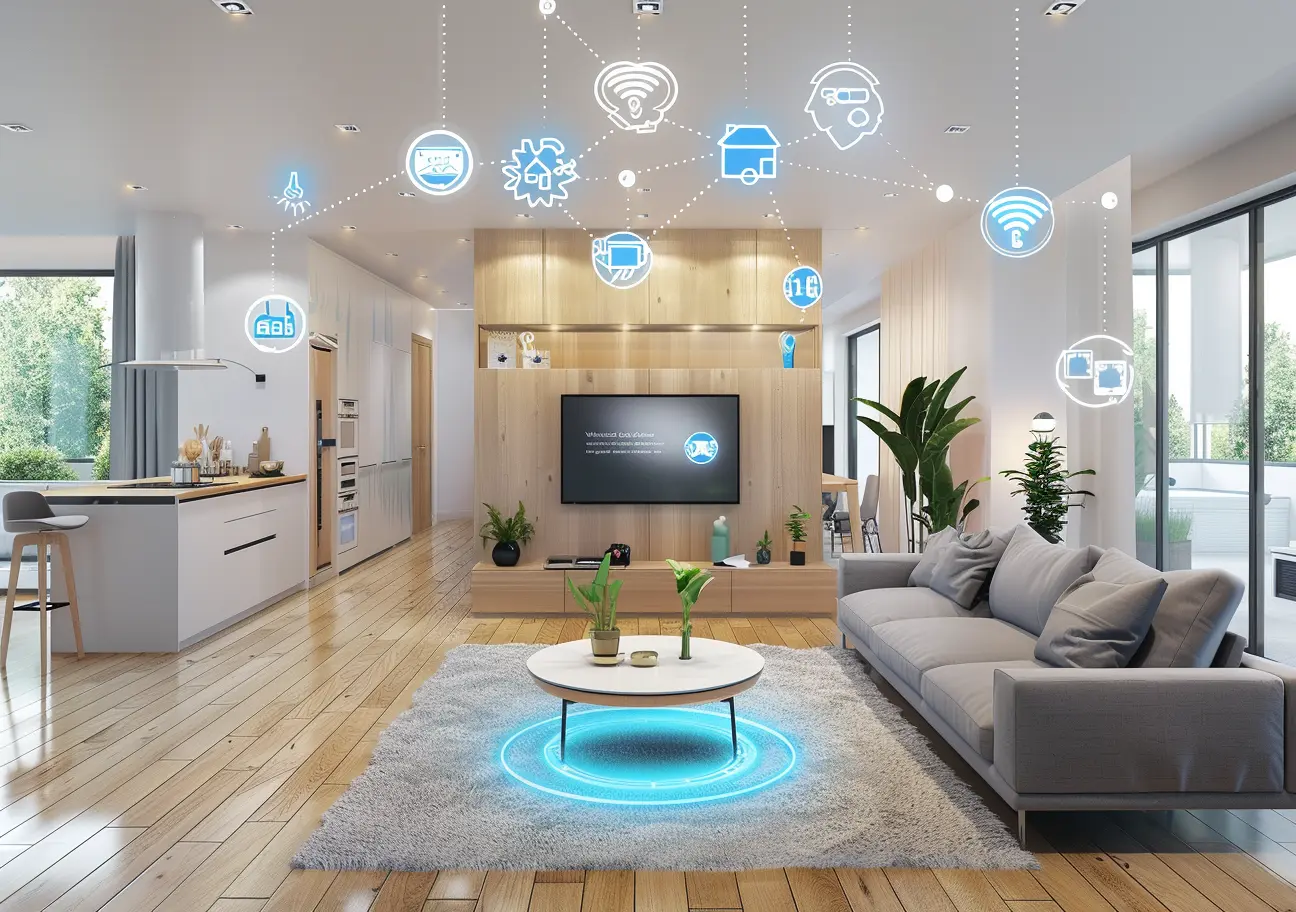The Essential Guide to Building Your Smart Home

What Is a Smart Home?
Benefits of Building a Smart Home
1. Convenience
The convenience offered by smart home automation is unparalleled. With a seamless network of interconnected devices, you can control multiple aspects of your house. These include temperature, lighting, security, etc. That not only saves your time but also makes life easier and more comfortable.
Imagine lights being turned on as soon as you enter the room or thermostats adjusting temperature as per your preference. You can also amp up security with smart locks, obtaining much-needed peace of mind.
You can control the systems remotely using the smartphone. Alternatively, you can also set it up by using voice commands.
2. Energy-efficiency
3. Reduced Costs

Key Components of a Smart Home
Every smart home has the following basic components:
- Smart Devices
Smart devices are the building blocks of smart homes. These are the products that facilitate automation to make your living space safe, comfortable, and intelligent.
Below is the list of the most common smart devices used:
- Smart Thermostats: They automatically regulate the room temperature based on occupancy, user preferences, past trends, and feed from other connected devices.
- Smart Lights: Thanks to sensors, smart lights can detect a person’s presence and turn on/off accordingly. Using your smartphone, you can also dim lights, set a time for changing colors, etc.
- Smart Sensors: Based on the same motion detection technology, these gadgets can alert you in case of intrusion, water leakage, fire hazards, and even toxic smoke levels.
- Smart Locks: Way ahead of the traditional locks, these intelligent counterparts come with features like biometric verification, PIN codes, etc., for added security.
- Smart Appliances: Numerous appliances boast advanced features like washing machines that can be controlled remotely, coffee makers with voice-assistant integration, and ovens that automatically adjust cooking settings.
- Connectivity/Networking Infrastructure
- Platforms for Controlling and Monitoring Smart Devices
How to Build Your Smart Home?

- Plan According to Your Needs
Why do you need a smart home? Is it because you want to make your living space more convenient, or do you want extra safety? Or is it both?
Answering these questions will help you sort out your priorities so that you don’t purchase unnecessary devices and exceed the budget limit.
Next, consider your current room layouts and setups to understand the changes required (if any). Don’t forget to leave room for future expansion and scale-ups.
- Choose the Right Smart Home Devices
- Get a Solid Internet Connection
Check your current internet connection and see if it can support the growing needs of your smart home. This is essential as without a stable internet connection, your system will collapse.
Find a reliable internet service provider and select a plan that suits your budget as well as speed requirements. Also, ensure it provides strong internet coverage throughout the entire property.
- Install and Set Up Your Devices
While some devices are easy to install, others can give you a hard time. Especially if you’re a novice. It’s best to seek professional help when setting up and configuring smart devices.
Make sure you follow the manufacturer’s recommendations—the ideal location for placement, maintenance, usage, etc.
- Focus on the Security and Privacy of Your Smart Home System
How Much Does a Smart Home Cost?
The exact cost of a smart home depends on a myriad of factors, like smart devices connected to the system, subscription services, installation costs (DIY/professional), etc.
However, one thing is for sure—it will bring a good return if you invest wisely. Therefore, it’s important to stick to your requirements, set a budget accordingly, and explore rebate options.
Plan Your Smart Home With PD Building Automation
At PD Building Automation, we understand that every smart home is different. That’s why we provide custom solutions to homeowners looking to spruce up their living space with a dash of smartness.
We listen to your problems and needs so that the final result is nothing less than the best possible replica of your dreams. And all this takes place within a reasonable budget and with skilled technicians.
So, contact us today to build your smart home and redefine what comfort means.
